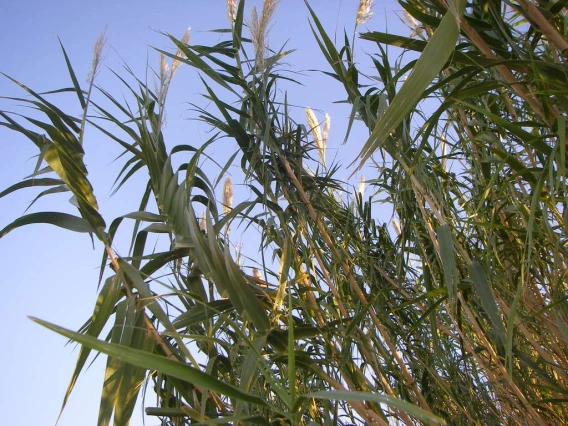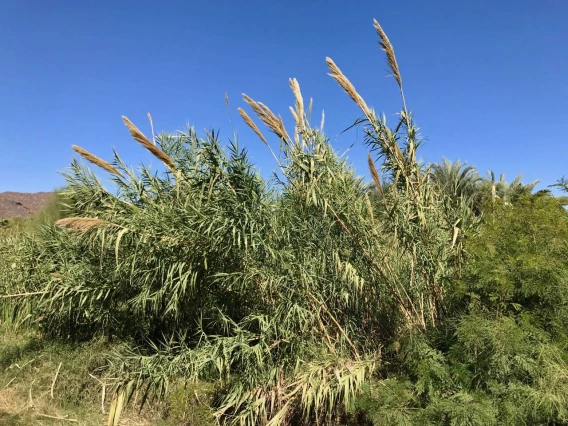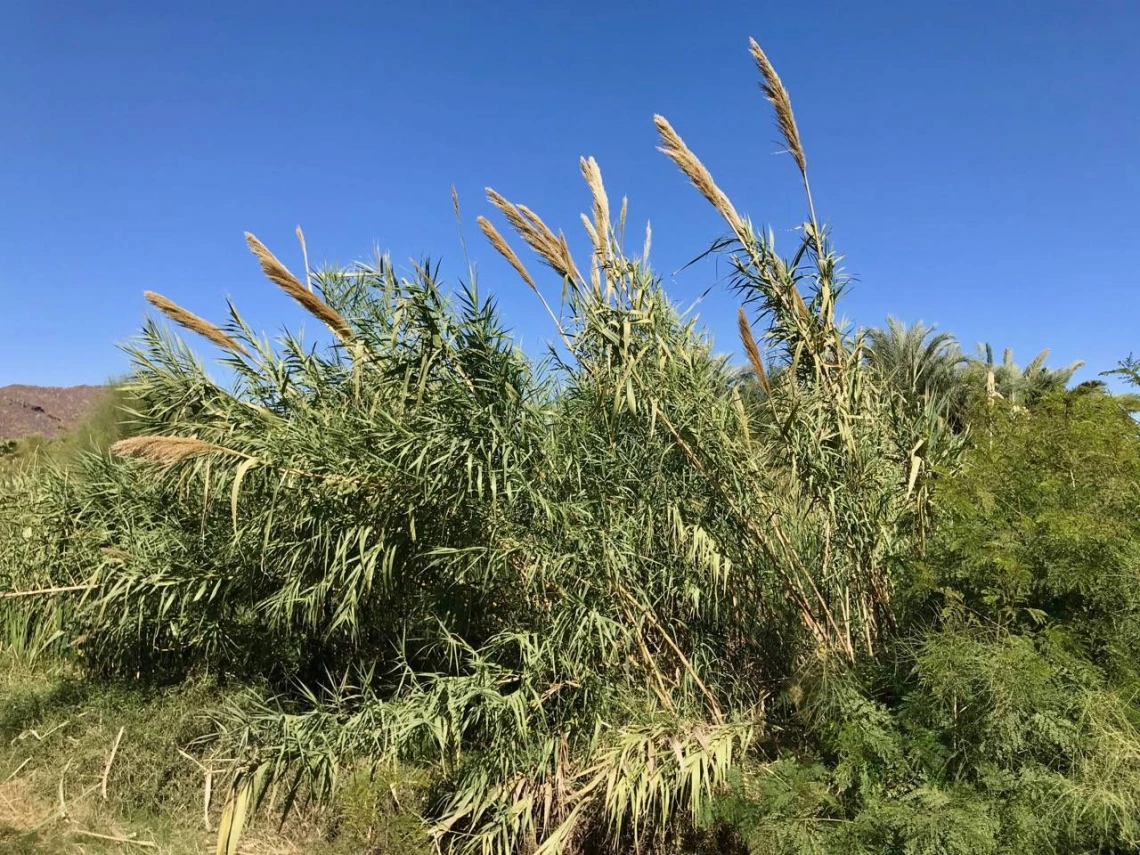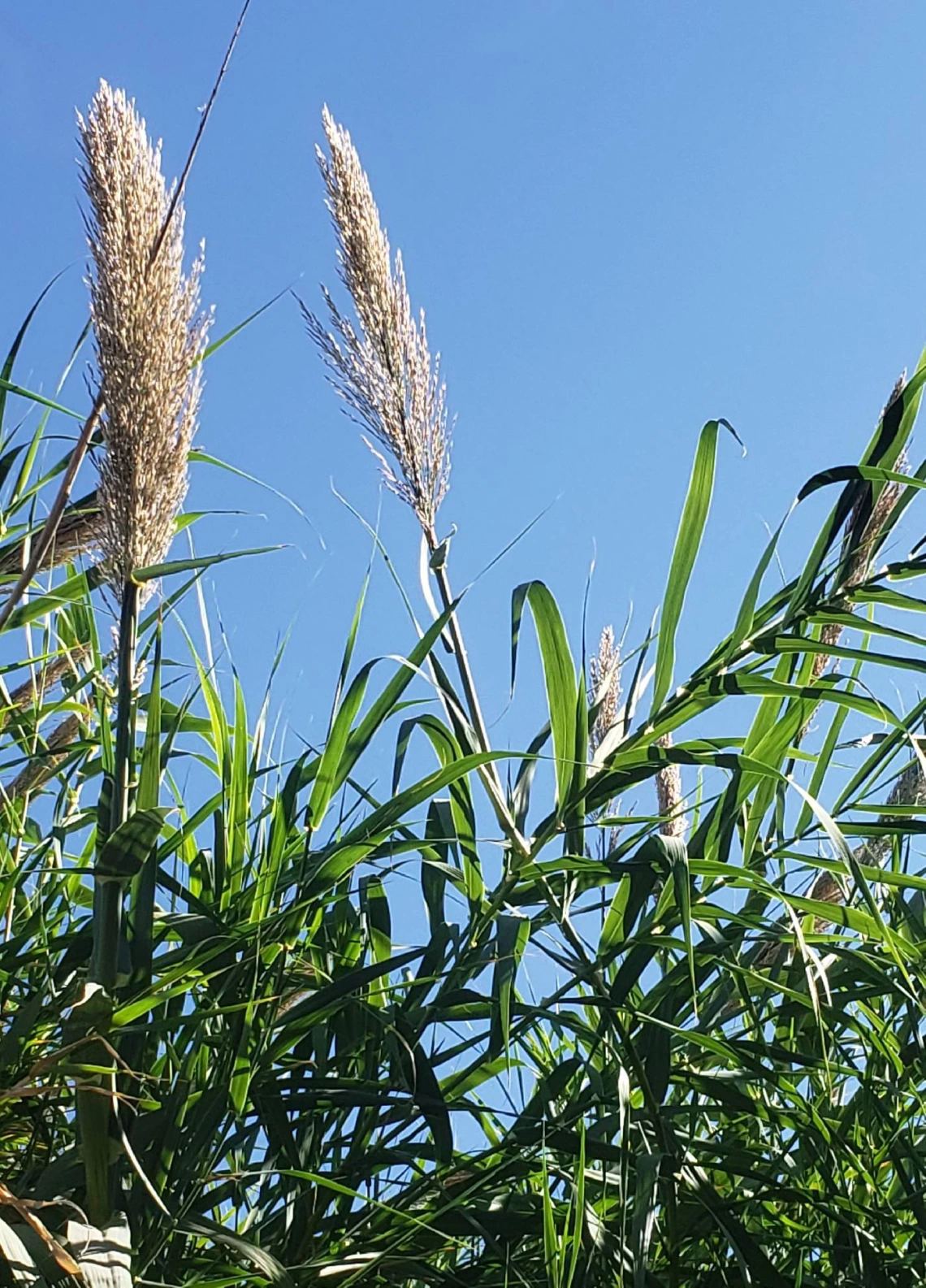Image

Anthony Mendoza
Common Name(s)
Giant reed
Giant cane
Elephant grass
Carrizo
Arundo
Spanish cane
Colorado river reed
Wild cane
Scientific Name
Arundo donax
Family
Grass family (Poaceae)
Reasons for concern
Giant reed creates a tough root base that uproots native plant and outcompetes them for necessary resources like water and nutrients, decreasing natural biodiversity. These plants also disrupt the natural floodplain by blocking river flow and overall, use significantly more water than native plants. Giant reed also provides large amounts of dry biomass that feeds fires.
Classification
Class B Noxious Weed, categorized as a species of plant that is known to occur, but of limited distribution in the State and may be a high priority pest for quarantine, control or mitigation if a significant threat to a crop, commodity, or habitat is known to exist.
Botanical description
Tall, bamboo like grass with long, alternating leaves
Leaves
Rounded at the base and taper at the tip, alternating leaves 1 to 2 inches wide and 1 to 2 feet long, Lower part of the leaf is yellow, has fine hairs, and clasps the stem in a distinctive “S” wave. The rest of the leaf is pale green to blue green, but rarely can be variegated
Stem(s)
Robust, hollow, almost woody 6-16 feet tall, up to 2 inches in diameter with knotty nodes
Inflorescence
Dense plume, 1 to 2 feet long, white to brown depending on maturity
Roots
Tough, fibrous, lateral rhizomes, and deep tap roots.
Native to
Asia
Where it grows
Riparian environments, long disturbed and undisturbed streambanks, desert springs, flood plains, drainages, and irrigation waterways, or anywhere water collects
Lifecycle
Perennial
Reproduction
Direct from stem and rhizome pieces
Weedy Characteristics
Giant reed can grow from rhizome fragments as small as 1 inch, and grows quickly.
Control Strategies
Repeat applications of glyphosate are effective when applied after the flowering season. When manually removing the plants, make sure to get the entirety of the rhizomes and dispose of them properly, as even a small piece of rhizome can grow into another plant. To ease removal, cut the above ground canopy with a mower or shears, then remove the roots and rhizomes with a shovel or by hand
References
- https://www.swvma.org/wp-content/uploads/Plant-Press-432-pp-4-10-Fenner31012.pdf
- https://edis.ifas.ufl.edu/publication/AG307
- https://www.fs.usda.gov/Internet/FSE_DOCUMENTS/stelprdb5410114.pdf
- https://watershedmg.org/newsmedia/efforts-remove-invasive-giant-reed-arizona-rivers-and-lakes-continues-department-forestry
- https://en.wikipedia.org/wiki/Arundo_donax





